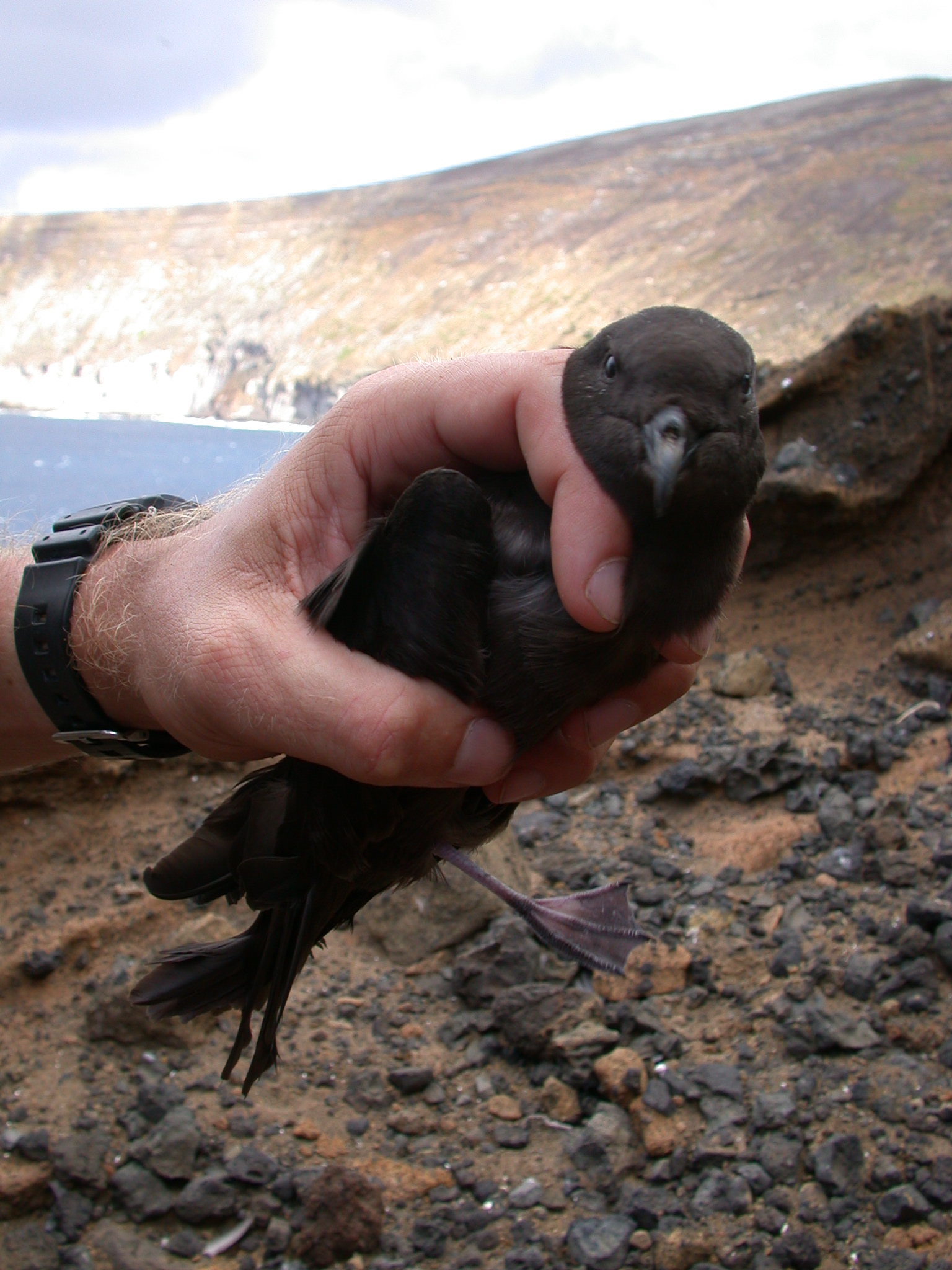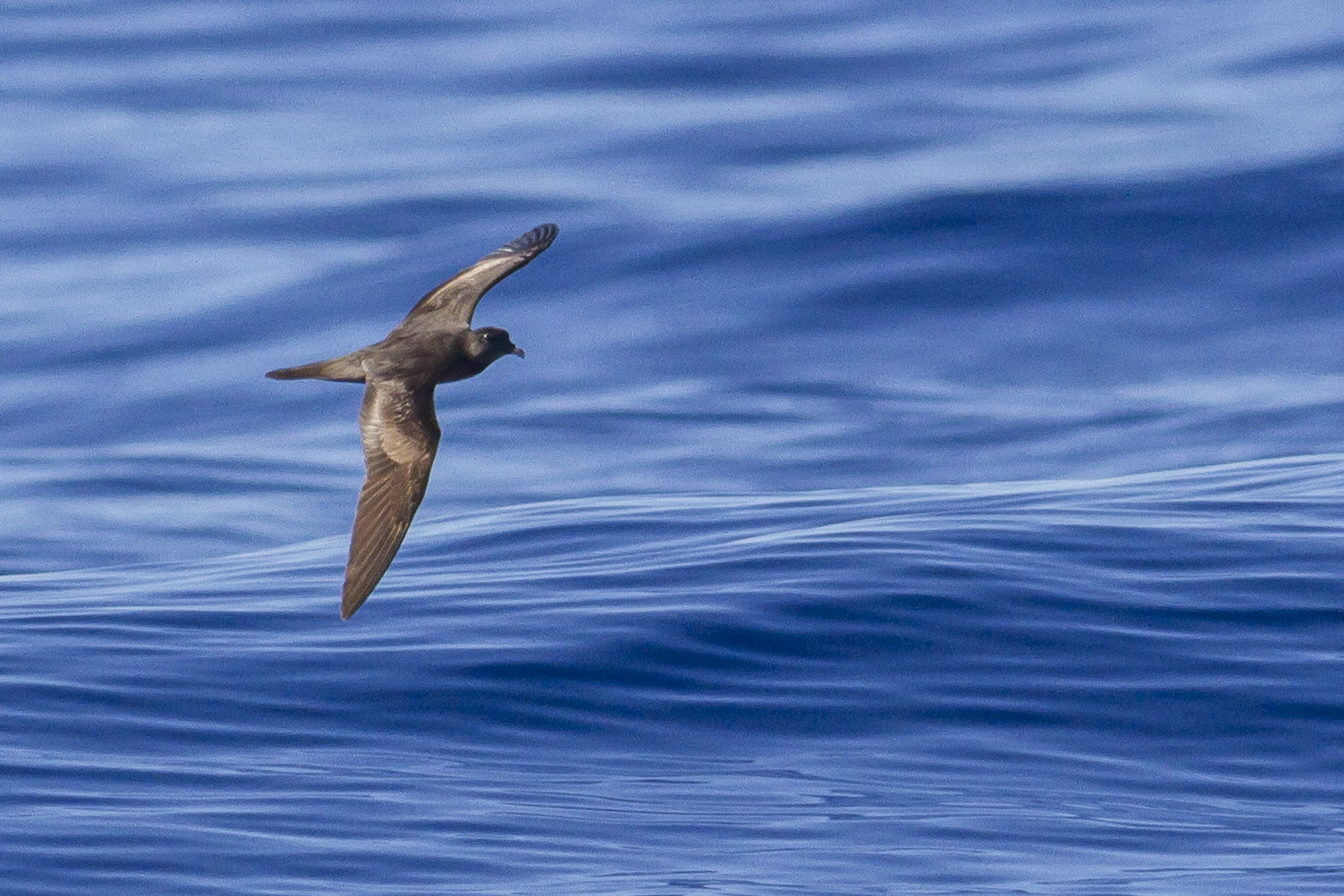ʻOu

Names
- ʻŌlelo Hawaiʻi: ‘Ou
- Common: Bulwer’s Petrel
- Scientific: Bulweria bulwerii
Song
Conservation Status
- State recognized as Indigenous
- NatureServe Heritage Rank G4 – Apparently secure
- North American Waterbird Conservation Plan – Moderate concern
- Regional Seabird Conservation Plan – USFWS 2005
Species Information
The ‘ou or Bulwer’s petrel is a highly pelagic, nocturnal gadfly petrel (Family: Procellariidae) distributed in tropical regions. Individuals have long pointed wings, a long pointed tail, a black bill and pale short legs. Adult males and females are overall sooty brown, with a pale bar across the proximal half of upper wings. Flight is buoyant and erratic; individuals fly low over the water using short wing beats followed by glides. ‘Ou (Bulwer’s petrel) forage alone. Foraging behavior is poorly known as is diet. Likely takes prey at surface by dipping on the wing or seizing while sitting on the water. Diet includes fish and squid, but also crustaceans and sea-striders. ‘Ou (Bulwer’s petrel) form long-term pair bonds and breed in large colonies. Limited data suggests they return to their natal colonies to breed and pairs return to the same nest site year after year. Nest is placed in a variety of hollows or crevices. Nests have a strong musky odor and may be nothing more than the cavity floor or may be lined with feathers, vegetation, or rubble. In Hawai‘i, eggs are laid from mid May to mid June and most nestlings fledge by early October. Both parents incubate the egg, and brood and feed the chick. Age at first breeding is six years, and the oldest known individual was 24 years old.
Distribution
‘Ou (Bulwer’s petrel) breed throughout the NWHI and on offshore islets of the MHI, including Hulu, Kaeoi, Kāohikaipu, Kapapa, Ka‘ula, Lehua, Mānana, Moke‘ehia, Mōkōlea Rock, Moku Lua, Moku Manu, Mokuho‘oniki, Molokini, and Popoi‘a. Outside of Hawai‘i, ‘ou (Bulwer’s petrel) breed on a limited number of islands in the North Atlantic, North and South Pacific, and Indian Ocean. Non-breeding season range is poorly known, but have been observed dispersing to the southeast after breeding.
Habitat
Terrestrial: ‘Ou (Bulwer’s petrel) breed on rocky islets and atolls, nesting in rock crevices, rock or coral rubble, under vegetation, and man-made nest structures. Marine: Pelagic
Threats
- Introduced predators. Like all seabirds, adults and nests susceptible to predation by rats and feral cats (Felis silvestris). All sites in NWHI are free of rats and cats. Recent eradication of rats from Midway and Kure should allow re-establishment of breeding colonies.
- Invasive species. Introduced big-headed ants (Pheidole megacephala) have been observed killing piping chicks.
- Catastrophic events. Given that a large portion of the world’s population breeds on Nihoa, a single catastrophic event (e.g., hurricane) could decimate the species.
Explore From Home
Plans & Projects
- Maui Nui Seabird Recovery Project (MNSRP)
- Kauaʻi Endangered Seabird Recovery Project (KESRP)
- Lehua Island Ecosystem Restoration Project
Additional Resources
For more information and references visit the DLNR State Wildlife Action Plan factsheets. DOFAWʻs species pages and State Wildlife Action Plan fact sheets are provided for general information and are not meant to be a citable, original source of data. If you are a student, researcher, or writer looking for a citable source, please explore the references below or find other original data sources, rather than citing these webpages. The references below were provided by the authors of the State Wildlife Action Plan fact sheets at the time of drafting:
- Hawai’i Natural Heritage Program [Hawai‘i Biodiversity and Mapping Program]. 2004. Natural diversity database. University of Hawai’i, Center for Conservation Research and Training. Honolulu, HI.
- Kushlan JA, et al. 2002. Waterbird Conservation for the Americas: The North American waterbird conservation plan, Version 1 Waterbird Conservation for the Americas, Washington, DC. 78pp. Available at: www.waterbirdconservation.org.
- Megyesi JL, O’Daniel DL. 1997. Bulwer’s petrel (Bulweria bulwerii). In The Birds of North America, No. 281 (Poole A, Gill F, editors.). Philadelphia, (PA): The Academy of Natural Sciences; and Washington DC: The American Ornithologists’ Union.
- NatureServe. 2003. Downloadable animal data sets. NatureServe Central Databases. Available at: https://www.natureserve.org/getData/vertinvertdata.jsp (March 10, 2005).
- U.S. Fish and Wildlife Service. 2005. Regional seabird conservation plan, Pacific Region. U.S. Fish and Wildlife Service, Migratory Birds and Habitat Programs, Pacific Region. Portland, (OR): U.S. Fish and Wildlife Service.




